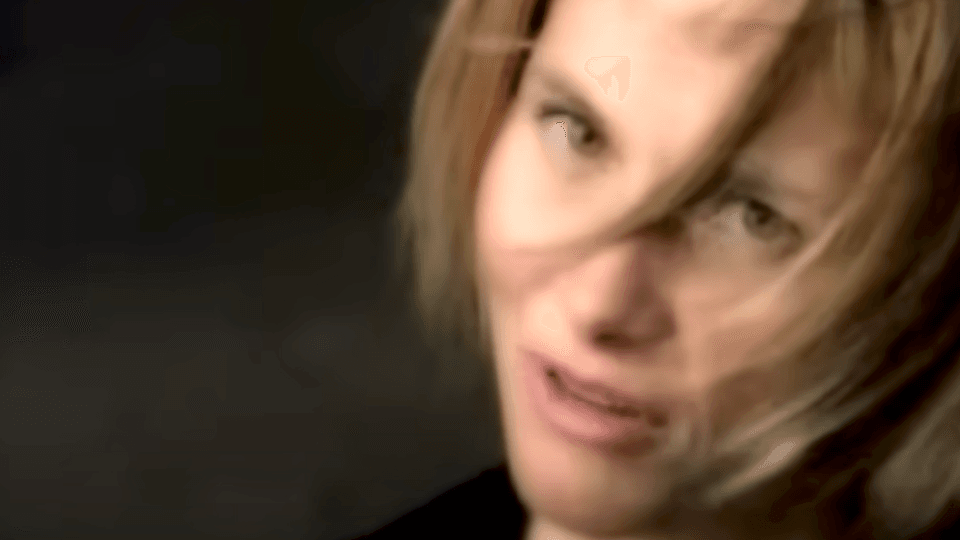The cover of Shawn Colvin’s 1996 album A Few Small Repairs is a striking image of a three-eyed woman holding a lit match. The image is actually a painting by Colvin’s friend, artist Julie Speed, which inspired Colvin to write the song, “Sunny Came Home.” At the time of the song’s release, Colvin was a talented and critically lauded singer-songwriter who’d been working in the folk music arena for years. She had a devoted fan base at the time, but she struck gold with the deceptively bright tones of “Sunny Came Home.”
Co-written with John Leventhal, the song reached number seven on the Billboard charts. If you were listening to Top 40 radio in the summer of 1997, it was impossible to escape that memorable mandolin intro, and those haunting lyrics about a woman named Sunny who returns home “with a mission.”
Colvin, who taught herself to play guitar, spent her younger years in Canada and Illinois. She started forming bands and performing live during her college days. She eventually moved to New York, where she became part of the folk music scene, and also appeared in Off-Broadway productions, including Pump Boys and Dinettes.
Colvin was a rising star on the folk circuit in 1987 when she sang background vocals on Suzanne Vega’s iconic hit “Luka.” She later toured with Vega, and around that time, began working with John Leventhal as a co-writer. Colvin’s well-regarded debut album, Steady On, was released in 1989. Steady On won a Grammy for Best Contemporary Folk Recording, and her sophomore release, 1992’s Fat City, included the singles “I Don’t Know Why,” and “Round of Blues,” both of which scored significant airplay on Adult Contemporary radio.
Fat City was followed by the 1994 album Cover Girl, which featured Colvin’s takes on tunes by The Police, Tom Waits, Judee Sill, and Jimmy Webb. It was her next record, A Few Small Repairs, that catapulted Colvin into the spotlight.
“Sunny Came Home,” and its accompanying music video were ubiquitous during the summer months of 1997, and the song sparked discussions on the meaning of those mysterious lyrics. Is Sunny seeking revenge on a lover who spurned her? Was she a victim of abuse? In interviews throughout the years, Colvin has related that while the song isn’t specifically based on her own life, she often gains inspiration from her own experiences as a songwriter. She also welcomes the personal interpretations that listeners have drawn from the song’s evocative images. “Sunny Came Home” was the last song composed for A Few Small Repairs, a record on which Colvin and Leventhal began crafting more character-driven songs, which included not only “Sunny Came Home” but “The Facts About Jimmy,” and “Witchita Skyline.”
“Sunny Came Home,” received Grammy Awards for both Record and Song of the Year in 1998, and the ceremony is memorable not only for those big wins but also for the fact that rapper Ol’ Dirty Bastard interrupted Colvin during the Song of the Year presentation to protest losing the previously announced Best Rap Album award to Puff Daddy. He eventually departed the stage after rambling on for a bit, and Colvin got to continue her acceptance speech.
Following the success of “Sunny Came Home,” and A Few Small Repairs, Colvin has continued to record new music and tour regularly. She’s worked with artists such as Mary Chapin Carpenter, James Taylor, Béla Fleck, and Steve Earle. Her most recent album, The Starlighter, is based on the popular children’s book, Lullabies and Night Songs. In 2017, she revisited “Sunny Came Home,” with an extraordinary solo acoustic version of the song.
-John Visconti
Fair use image from “Sunny Came Home” video





What a talent. An underrecognized one, as well, yeah?
Really cool piece here, John.
On her Cover Girl album is a cover of Dylan’s “You’re Gonna Make Me Lonseome” with brilliant guitar work, maybe the best cover of that song that exists.